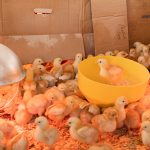During winter, pet chickens require specific care to maintain their health and well-being. Although chickens are generally hardy, they can be affected by cold temperatures without proper care and environment. Winter care for pet chickens involves providing warmth, protection from the elements, and access to unfrozen food and water.
Reduced daylight hours in winter can cause stress in chickens, making it crucial to offer a comfortable and secure environment. Adequate ventilation in the coop is essential during winter, despite the cold temperatures. Proper airflow helps maintain good air quality and prevents moisture buildup, which can lead to respiratory problems and frostbite.
By addressing these specific needs, pet chicken owners can ensure their birds remain healthy throughout the winter season.
Table of Contents
- 1 Providing a cozy and insulated coop
- 2 Using heat lamps and heating pads safely
- 3 Ensuring proper ventilation
- 4 Offering warm and nutritious food and water
- 5 Adding bedding and nesting materials
- 6 Monitoring and adjusting for temperature fluctuations
- 7 FAQs
- 7.1 What are the best ways to keep pet chickens warm in winter?
- 7.2 How can I insulate my chicken coop for winter?
- 7.3 Is it safe to use heat lamps or heated pads for chickens in winter?
- 7.4 What temperature is too cold for chickens in winter?
- 7.5 How can I ensure good ventilation in the chicken coop during winter?
Key Takeaways
- Pet chickens need extra care in winter to stay warm and healthy
- A cozy and insulated coop is essential to protect chickens from cold temperatures
- Heat lamps and heating pads can be used safely to provide additional warmth
- Proper ventilation is crucial to prevent moisture buildup and maintain air quality
- Offering warm and nutritious food and water is important for keeping chickens healthy
- Adding bedding and nesting materials can help chickens stay warm and comfortable
- Regular monitoring and adjustments are necessary to ensure chickens are comfortable and safe in fluctuating temperatures
Providing a cozy and insulated coop
Caring for Pet Chickens in Winter
Providing a Cozy and Insulated Coop
One of the most important aspects of caring for pet chickens in winter is providing them with a cozy and insulated coop. This means ensuring that the coop is well-constructed and free from drafts, as drafts can significantly lower the temperature inside the coop and make it uncomfortable for the chickens. Insulating the coop with materials such as straw, hay, or even foam board can help retain heat and keep the interior warm.
Sealing Gaps and Cracks
Additionally, sealing any gaps or cracks in the coop can further prevent drafts and maintain a comfortable environment for the chickens.
Providing Adequate Bedding and Nesting Materials
In addition to insulation, providing a cozy environment for pet chickens in winter also involves providing adequate bedding and nesting materials. This not only helps keep the chickens warm but also provides them with a comfortable place to rest and lay eggs. Bedding materials such as straw, wood shavings, or shredded paper can be used to create a soft and warm environment for the chickens.
Keeping Chickens Warm and Comfortable
By ensuring that the coop is cozy and insulated, pet chicken owners can help their feathered friends stay warm and comfortable throughout the winter months.
Using heat lamps and heating pads safely

When temperatures drop significantly, pet chickens may benefit from supplemental heat sources such as heat lamps or heating pads. However, it’s important to use these devices safely to prevent any potential fire hazards or injuries to the chickens. When using heat lamps, it’s crucial to secure them properly to prevent them from falling and causing a fire.
Additionally, using a heat lamp with a guard can help prevent the chickens from coming into direct contact with the hot bulb, reducing the risk of burns. Heating pads can also be used to provide warmth to pet chickens, especially in nesting boxes or areas where they tend to roost. However, it’s important to use heating pads specifically designed for use with animals and to ensure that they are placed in a safe location where they won’t be damaged or cause any harm to the chickens.
By using heat lamps and heating pads safely, pet chicken owners can provide their feathered friends with the extra warmth they need during the winter months without compromising their safety.
Ensuring proper ventilation
Proper ventilation is essential for maintaining good air quality and preventing moisture buildup in the coop during the winter months. While it may seem counterintuitive to provide ventilation in a cold environment, it’s crucial for preventing respiratory issues and frostbite in pet chickens. Ventilation can be achieved through windows, vents, or even small openings near the roof of the coop.
By allowing fresh air to circulate while still maintaining a comfortable temperature inside the coop, pet chicken owners can ensure that their feathered friends stay healthy throughout the winter. In addition to providing ventilation, it’s important to monitor and adjust the airflow in the coop as needed. This may involve opening windows or vents during milder days and closing them during particularly cold or windy days.
By paying attention to the airflow in the coop, pet chicken owners can ensure that their chickens have access to fresh air without being exposed to drafts or extreme temperatures. Overall, ensuring proper ventilation in the coop is crucial for maintaining the health and well-being of pet chickens during the winter months.
Offering warm and nutritious food and water
During the winter months, it’s important to offer pet chickens warm and nutritious food and water to help them stay healthy and maintain their body temperature. Chickens require more energy to stay warm in cold weather, so providing them with high-quality feed that is rich in protein and nutrients can help support their overall health. Additionally, offering warm water multiple times throughout the day can help prevent dehydration and keep the chickens hydrated, especially when temperatures are below freezing.
In addition to regular feed, pet chicken owners can also provide their feathered friends with warm treats such as cooked grains, vegetables, or even mealworms. These treats not only provide additional nutrients but also help keep the chickens satisfied and comfortable during the winter months. By offering warm and nutritious food and water, pet chicken owners can help their feathered friends stay healthy and happy throughout the colder months.
Adding bedding and nesting materials

Insulation and Comfort
Adding bedding and nesting materials to the coop is essential for providing pet chickens with a warm and comfortable environment during the winter months. Bedding materials such as straw, hay, or wood shavings can help insulate the coop and provide a soft surface for the chickens to rest on. Additionally, adding nesting materials such as shredded paper or dried grass can help keep eggs warm and protected from the cold.
Maintaining Good Hygiene
In addition to providing warmth, bedding and nesting materials also help maintain good hygiene in the coop by absorbing moisture and waste. This can help prevent issues such as frostbite or respiratory problems that can arise from damp or dirty conditions.
Regular Maintenance is Key
By regularly adding fresh bedding and nesting materials to the coop, pet chicken owners can ensure that their feathered friends have a clean and comfortable environment throughout the winter months.
Monitoring and adjusting for temperature fluctuations
During the winter months, it’s important to monitor and adjust for temperature fluctuations in the coop to ensure that pet chickens stay comfortable and healthy. This may involve using a thermometer to regularly check the temperature inside the coop and making adjustments as needed. For example, if temperatures drop significantly, pet chicken owners may need to provide additional heat sources or insulation to keep the coop warm.
In addition to monitoring temperature fluctuations, it’s also important to pay attention to other factors that can affect the chickens’ comfort, such as humidity levels and drafts. By regularly assessing these conditions and making necessary adjustments, pet chicken owners can ensure that their feathered friends have a safe and comfortable environment throughout the winter months. Overall, monitoring and adjusting for temperature fluctuations is crucial for maintaining the health and well-being of pet chickens during colder weather.
If you’re looking for more tips on how to keep your pet chickens warm in winter, you might want to check out this article on chicken coop interior ideas. It offers helpful suggestions on how to create a cozy and insulated environment for your chickens during the colder months.
FAQs
What are the best ways to keep pet chickens warm in winter?
Some of the best ways to keep pet chickens warm in winter include providing a well-insulated coop, using heat lamps or heated pads, and ensuring good ventilation while avoiding drafts.
How can I insulate my chicken coop for winter?
You can insulate your chicken coop for winter by adding extra bedding, sealing any drafts, and using insulating materials such as foam board or reflective insulation.
Is it safe to use heat lamps or heated pads for chickens in winter?
It is safe to use heat lamps or heated pads for chickens in winter as long as they are installed properly and used according to the manufacturer’s instructions. It’s important to monitor the temperature to prevent overheating or fire hazards.
What temperature is too cold for chickens in winter?
Chickens can tolerate cold temperatures, but it’s generally recommended to keep the coop above freezing (32°F or 0°C). Extreme cold temperatures can lead to frostbite and other health issues for chickens.
How can I ensure good ventilation in the chicken coop during winter?
You can ensure good ventilation in the chicken coop during winter by providing adequate air flow without creating drafts. This can be achieved by using adjustable vents and ensuring that the coop is not completely sealed off from the outside air.
Meet Walter, the feathered-friend fanatic of Florida! Nestled in the sunshine state, Walter struts through life with his feathered companions, clucking his way to happiness. With a coop that’s fancier than a five-star hotel, he’s the Don Juan of the chicken world. When he’s not teaching his hens to do the cha-cha, you’ll find him in a heated debate with his prized rooster, Sir Clucks-a-Lot. Walter’s poultry passion is no yolk; he’s the sunny-side-up guy you never knew you needed in your flock of friends!







